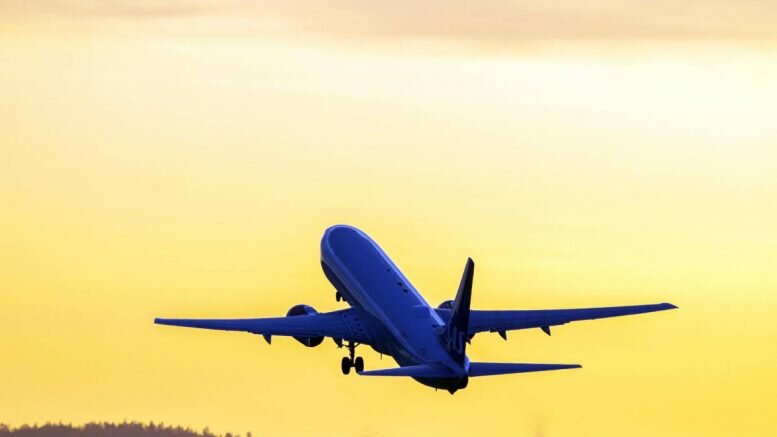The middle of a worldwide pandemic, with the aviation and tourism industries in ruins, would not, perhaps, seem the best time to launch a new airline. The new Norwegian airline, FLYR however, has done just that. A heavy focus on technology, for both customers and operations, is behind the plan to make this new airline nimble, sustainable, customer-friendly, and low cost…everything that they feel the current airlines in Norway are not.
FLYR: A Norwegian verb and now an airline
The Norwegian domestic airline industry has, in recent years, seen the emergence of new companies wanting to take on the established order. Traditionally dominated by the former government-controlled Scandinavian Air Service (SAS) and the now newly part Chinese-owned, Norwegian Air Shuttle, FLYR, a new airline which hopes to start flights by the end of June, is the latest entrant in an increasingly crowded market.
FLYR, as its website proudly announces, “is the Norwegian word for ‘flying’ and embodies us perfectly…(as)…it challenges traditional conventions of air travel”. Headed by C.E.O Tonje Wikstrøm Frislid, it is the brainchild of “enthusiastic aviation experts with extensive experience” who have worked in the Norwegian domestic and international airline industry. It will service both domestically, within Norway, and abroad, to so-called “popular destinations in Europe”, like Alicante, Malaga, and Spain.
Pandemic decimating tourism and aviation sectors in Norway
FLYR hopes to capitalize in an industry where there is as much turbulence on the ground as up in the air. The impact of the coronavirus pandemic has absolutely decimated both the aviation industry and, to a lesser extent, the Norwegian tourism industry, which is heavily reliant on air travel.
Norway is still, more than a year since the emergence of the coronavirus in its borders, struggling with the coronavirus pandemic. Borders are closed. Both local municipalities and the national government have, at times, locked down the entire country, restricting and severely limiting both national and international travel.
However, the government has, recently, unveiled its “four-stage” blueprint to open up Norwegian society. FLYR hopes to capitalize on a post-pandemic travel boom, and its website states that the company was “built for the Norwegian market after the coronavirus pandemic…we built an airline from scratch…with a size, organization, and business model that is adapted to this future”. The future may be looking even brighter as many of its future competitors have been on shaky ground lately.
FLYR: A new entrant in an increasingly crowded, and troubled, market
The past few years have seen drastic change for the Norwegian aviation sector. Breaking what was once almost a duopoly has been the emergence of low-cost carriers, of which FLYR is just the latest. Both low-cost carriers, against which FLYR will compete, and other more traditionally prestigious carriers, have had hard times in Norway of late.
The very epitome of low-cost carriers, Ryanair has seen a scaling back of its Norwegian operations. It was forced to move from Rygge Airport, in 2016, to Gardermoen blaming a government-enforced departure fee (of NOK80 for every passenger) as being an “environmentally unfriendly tax…”, according to a Routes Online article.
Wizz Air, the Hungarian ultra-low-cost carrier, had its maiden flight last November but its entry into Norway has been anything but smooth. A plethora of problems ranging from Norwegian pilot union concerns over the company’s human rights record to worries over its planes being coronavirus superspreaders to the closing of its Trondheim base has all seen the first 6 months of operation be one full of turbulence.
Both SAS and Norwegian have seen dramatic year-on-year passenger number declines whilst Norwegian itself has seen drastic financial restructuring, with help from the Chinese state, through a subsidiary, according to Forbes.
IPO raises NOK 600 million whilst stressing Norwegian distinctions
FLYR is keen to represent itself as everything that these other airlines servicing the Norwegian market are not. It is a private company (with no government partnership or support, unlike SAS) which was recently floated on the Oslo Stock Exchange gathering some NOK 600 million in its initial price offering (IPO) last month. The company, according to Reuters, now has a market cap of approximately NOK 700 million, which is not a bad result for an airline without a single plane in flight yet.
It is also keen to stress its affinity for Norway and the Norwegian market. The company will be based in Norway and will possess, according to its website, “an aircraft fleet, organization and business model intended for the Norwegian market.” After two “foreign” companies expanding, with mixed success, into Norway (Ryanair and Wizz Air), FLYR is presented as very much a Norwegian company.
Given Wizz Air’s recent troubles with outsourcing and low wages, FLYR’s mission statement is timely. It will hope to soothe those Norwegian politicians, legal and aviation experts, and those in the general public, who want businesses run in Norway to adhere to Norwegian business and legal standards and practices.
Sleek business model and agile infrastructure ready for demand
FLYR also hopes to be a more agile airline than its competition. What is seen as its main competitor, Norwegian, is in the process of scaling back its fleet from 150 to 40 planes due to the impact of coronavirus on the travel and aviation industry. With plans drawn up before its IPO, FLYR aims to buy a fleet of 8 jets and expand to 28 within the next 3-4 years.
Possessing no aging fleet, or having a large infrastructure to maintain during this crisis, will see FLYR be poised for growth. Chief Executive, Tonje Wikstroem Frislid, told Reuters, during its IPO, that “…due to the availability of aircraft and crew, a rapid and demand-driven scale-up is possible…” She also added that FLYR’s business model “…will enable us to pursue opportunities in a changing market and a recovering airline industry.” Its first aircraft, a Boeing 737-800, will be delivered in May with additional aircraft arriving in June with a view to expanding its fleet by this autumn.
Technology means smarter and greener flights
What will set FLYR apart from its rivals is that it hopes to rely heavily on technology. FLYR hopes to make the whole travel experience a lot simpler less time-consuming and more efficient with the use of its app. The entire booking and boarding process can be in the palm of your hand. This will help keep traditionally expensive overheads (like staff) at a minimum meaning potential lower prices for customers. Pricing hasn’t been set yet but as Norwegian is seen as its main rival, a similar pricing model should be expected.
This app will then help to learn customer habits which helps in its mission to be a sustainable airline. Specifically targeted flights to popular destinations are part of FLYR’s environmental philosophy of smarter and “greener” flying. This business model, it believes, will help FLYR remain “profitable without relying on more passengers flying often.”
Paradoxically, flying less often is what you would expect of a new airline. This is, though, exactly what FLYR would want: an agile, modern, sustainable, and proudly Norwegian airline that is on course to take advantage of an expected post-pandemic travel boom.
The opinions expressed are those of the author and are not held by Norway Today unless specifically stated.
Source: #Norway Today / #NorwayTodayNews
Do you have a news tip for Norway Today? We want to hear it. Get in touch at [email protected]





Leave a comment